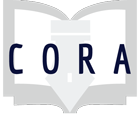Assignment
The Information Spectrum
This concept map and activity explores how various sources of information are created, accessed, and shared. Students collaboratively define what makes a source traditional, emerging, public, or exclusive. Students are given a type of information source to map on the grid according to each axis, and provide a rationale for their placement.
Students will be able to: 1) articulate the traditional and emerging processes of information creation and dissemination; 2) articulate the value and constraints of public and exclusive information; 3) assess the fit between an information product’s creation process and a particular information need.
Information Literacy concepts:
Individual or Group:
Ability Level:
This activity was used in a first-year writing course that did not include in-depth research, but students were encouraged to use a variety of sources, including primary sources. The assignment asked students to analyze a cultural artifact and how it has changed over time, such as the telephone or automobile. At the beginning of the class, the instruction librarian introduced the Information Spectrum concept map and asked students to collaboratively define characteristics of an information source in terms of traditional, emerging, public, and exclusive. With the Information Spectrum projected on a whiteboard, each student was given a slip of paper with a type of information source (e.g. print book, online news article, tweet) and a piece of tape to place on the grid. Students were asked to give a rationale for why they placed their source where they did. Students then worked in groups of 2-3 to evaluate a specific source related to an example topic. At the end of class, each group was given another slip of paper with their example source to map on the grid and provide a rationale.

